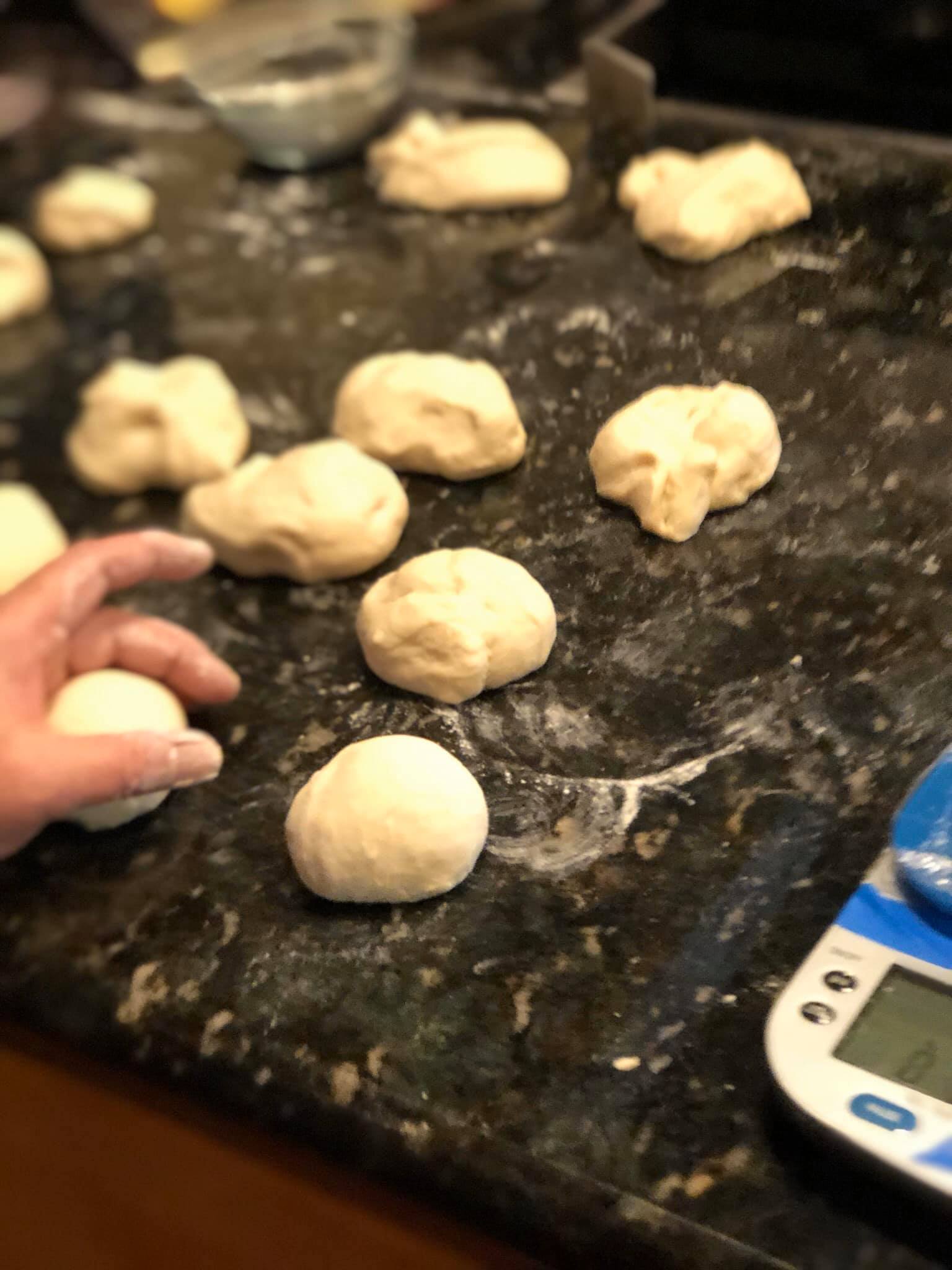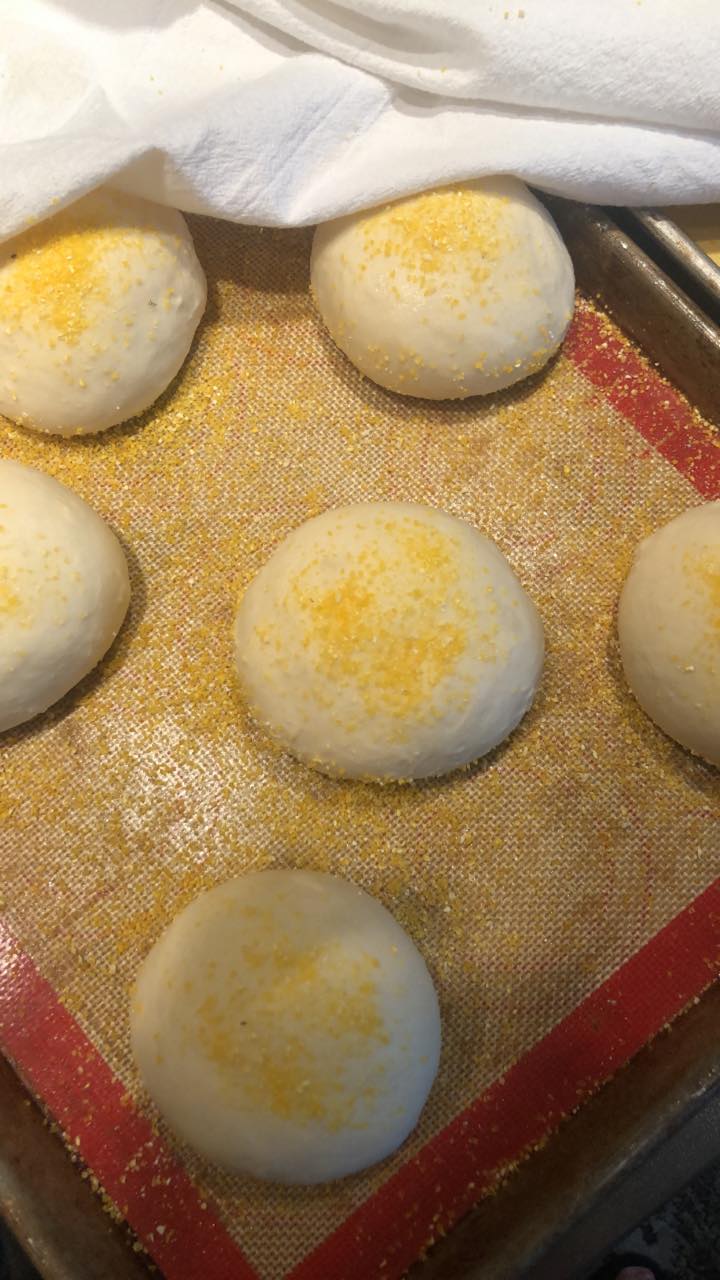This recipe is so user friendly and satisfying. I like to use buttermilk for a pleasant, sour tang. The use of bread flour is for an incredible chewy bite. The dough will naturally be sticky, In essence, this is a good sign; the mixture contains optimal hydration, which will yield the traditional nooks and crannies that English muffins are known for. Be sure to split open with a fork to reveal your labor. This dough tastes best when you ferment the mixture overnight, but it is not necessary. Toast them on the stovetop then finish them in the oven. So easy to make, you will be amazed.
You’ll Need:
5 cups unbleached bread flour
3 teaspoons granulated sugar or honey
2 teaspoons salt
2 1/2 teaspoons dry yeast
1/4 water, room temperature
1 1/2 cups buttermilk, room temperature
2 tablespoons unsalted butter, room temperature
Cornmeal for dusting
Cooking oil
Special Equipment:
Cast Iron Skillet
Scale
Here’s How:
In a small bowl, add the yeast to the water, stir. Set aside and allow the yeast to begin activation. In the bowl of your stand mixer, combine the dry ingredients—flour, sweetener, and salt. Fit with the dough hook and mix on low speed to combine.
Add the activated yeast, all but 1/4 cup of the buttermilk, and the butter. Mix on medium-low speed until the ingredients form a ball. If there is still loose flour in the bowl, drizzle in some of the remaining 1/4 cup buttermilk. Continue to knead for about 8-10 minutes until the dough looks soft, but still feels tacky and pliable.
Dust your fingertips with flour, and remove the dough from the bowl and gently form it into a ball. Spray the bottom of your mixing bowl with cooking spray and place the dough back in the mixing bowl. Turn it once to oil, to prevent a crust from forming. Cover lightly with a clean kitchen towel, and allow to rise 90 minutes in a quiet, warm location of your kitchen, or place in the refrigerator and allow the dough to ferment overnight for optimal flavor.
Prepare three sheet pans with non-stick liners and dust two with cornmeal. Set aside.
Wipe the counter with a damp cloth and release the dough gently from the bowl. Flouring the work surface is not necessary. Divide the dough into equal pieces weighing about 3 ounces each. Gently shape the pieces into small rounds practicing special attention not to deflate.

Transfer the dough balls to the sheet pans dusted with cornmeal, spacing them about 3 inches apart. Mist them lightly with spray oil, sprinkle them loosely with cornmeal, and cover with a clean towel.
Set aside and proof the rounds at room temperature for an additional 90 minutes or until the pieces nearly double in size.

Preheat the oven to 350˚F Degrees with the oven racks distributed evenly.
Heat a large cast-iron skillet or heavy-bottomed pan over medium heat, drizzle the pan and a wide spatula with cooking oil.
Uncover the muffin rounds, slide an oiled spatula under rounds, and gently transfer each one to the hot oiled pan, spacing them about an inch apart. Cook undisturbed for about 5 to 8 minutes, or until the bottoms are nicely brown and both sides slightly deflate to the characteristic of an English Muffin. Carefully flip and continue to cook on the other side for 5 to 8 minutes.
Transfer the pan-cooked muffins back to the original sheet tray and immediately place them in the oven. It’s essential not to wait for the remaining rounds to cook; they will deflate further.
Bake in the oven for an additional 7-8 minutes to ensure that the center bakes through. Cool, and cut open with a fork to display the nooks and crannies.
Makes 16
